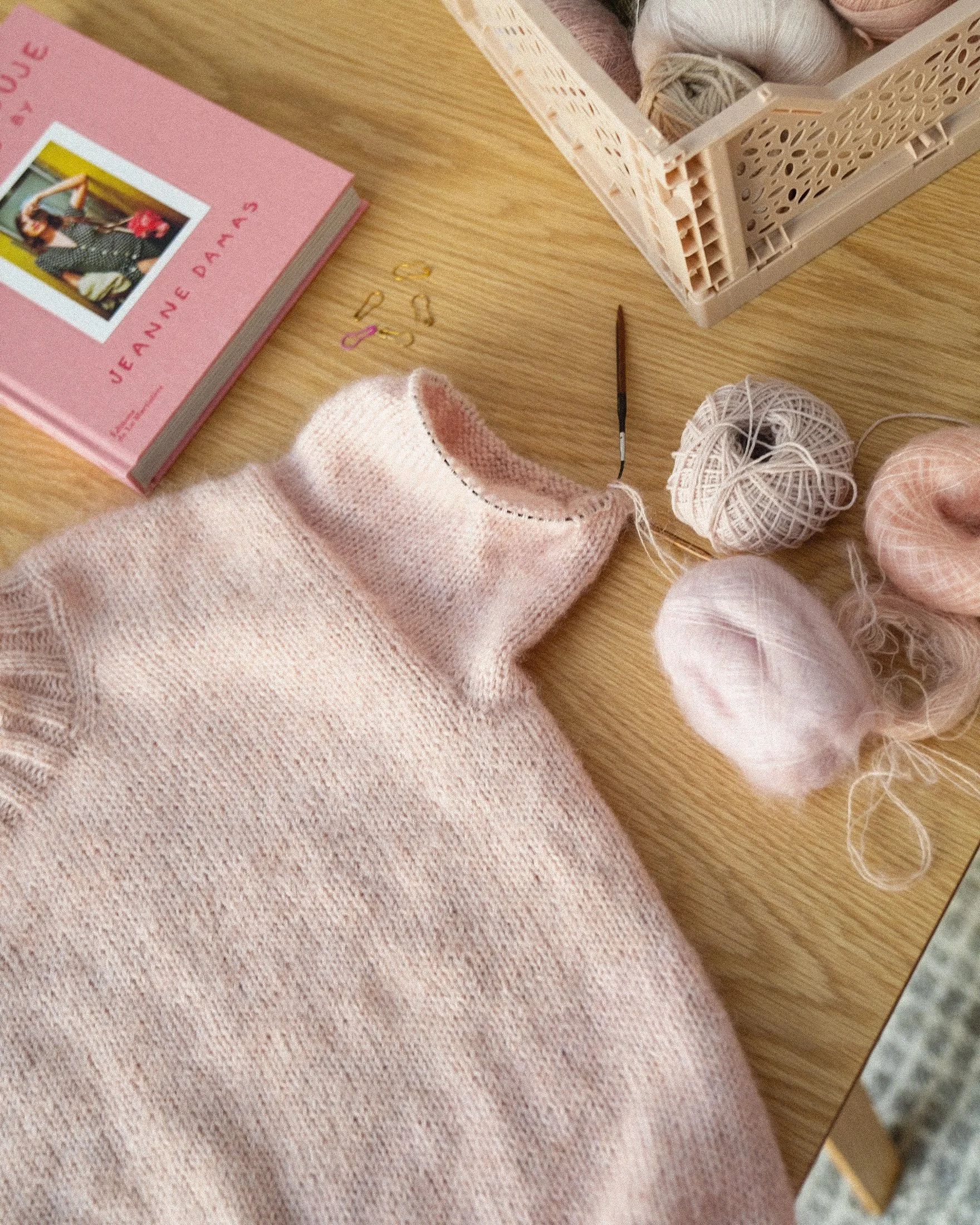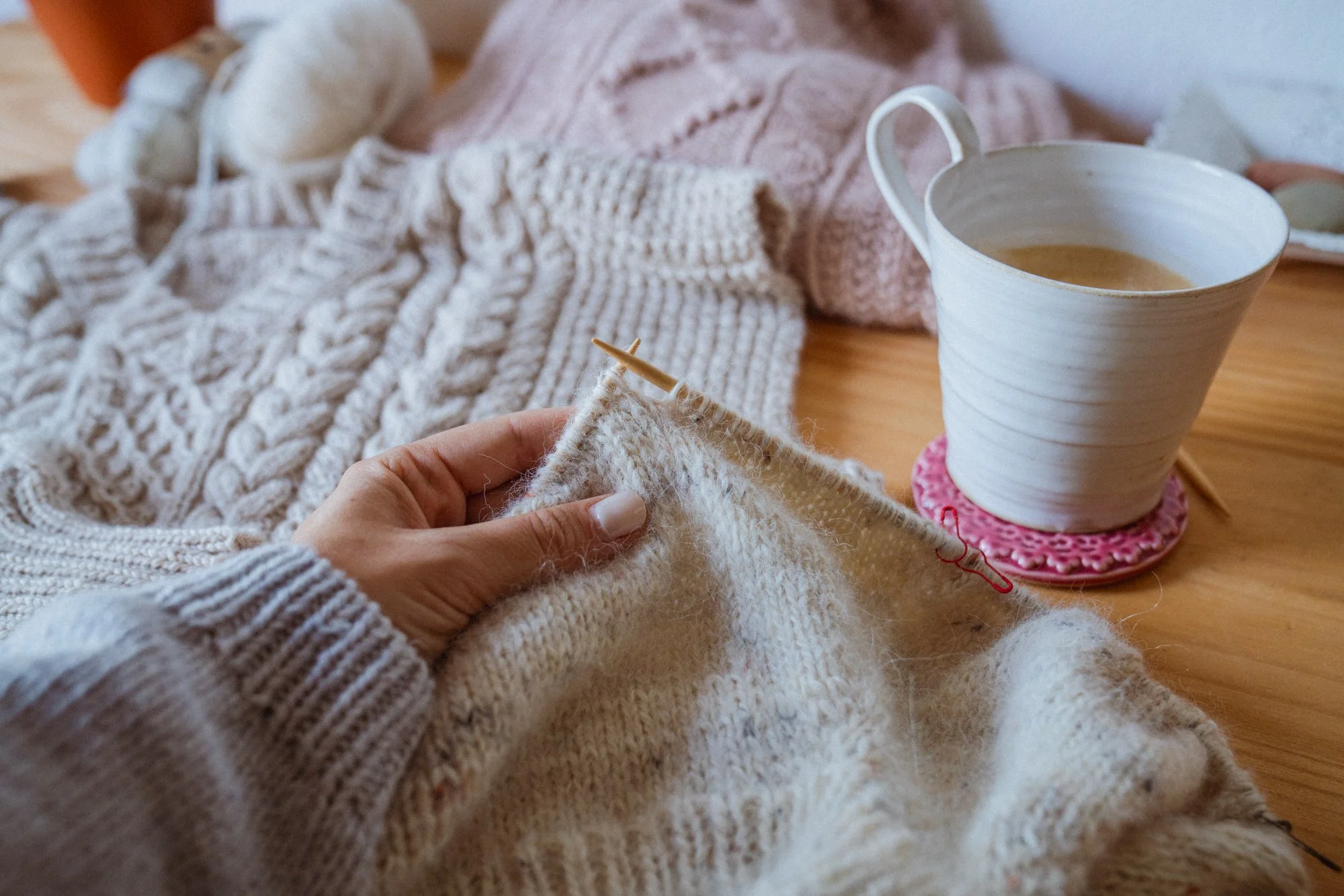
Knitting Techniques
Learn the Techniques Behind My Designs
On this page I’ve gathered links to videos that’ll walk you through the techniques and terminology used in my patterns.
Whether you're just starting out or you've been knitting for years, you'll find everything from essential basics to more advanced techniques, ready whenever you are.
Tip! You can also find full step-by-step video tutorials for specific projects here

BASICS
-
The Long-Tail Cast-on method is a versatile and stretchy method that creates a neat edge, perfect for starting many knitting projects. Learn how to do it step by step in this video.
-
Stockinette Stitch is a classic pattern with a smooth knit side and a textured purl side. This video shows you how to knit it step by step.
-
The purl stitch is one of the foundations of knitting, essential for creating textured patterns and the reverse side of Stockinette stitch. Learn how to knit it step by step in this video.
-
The Standard Bind-Off is perfect for finishing your projects with a tidy edge. This video explains how to do it.
-
Knitting through the back loop (k tbl) creates a twisted stitch for added texture or strength. Watch this video to learn how.
-
Knitting charts can seem tricky, but they’re a great tool once you know how to use them. This video breaks it down step by step.
-
Choosing the right pattern size is key to a great fit. This video explains how to take measurements and match them to your pattern.
-
Using the right needle size can make or break your project. Learn how to choose the perfect size for your yarn and pattern in this video.
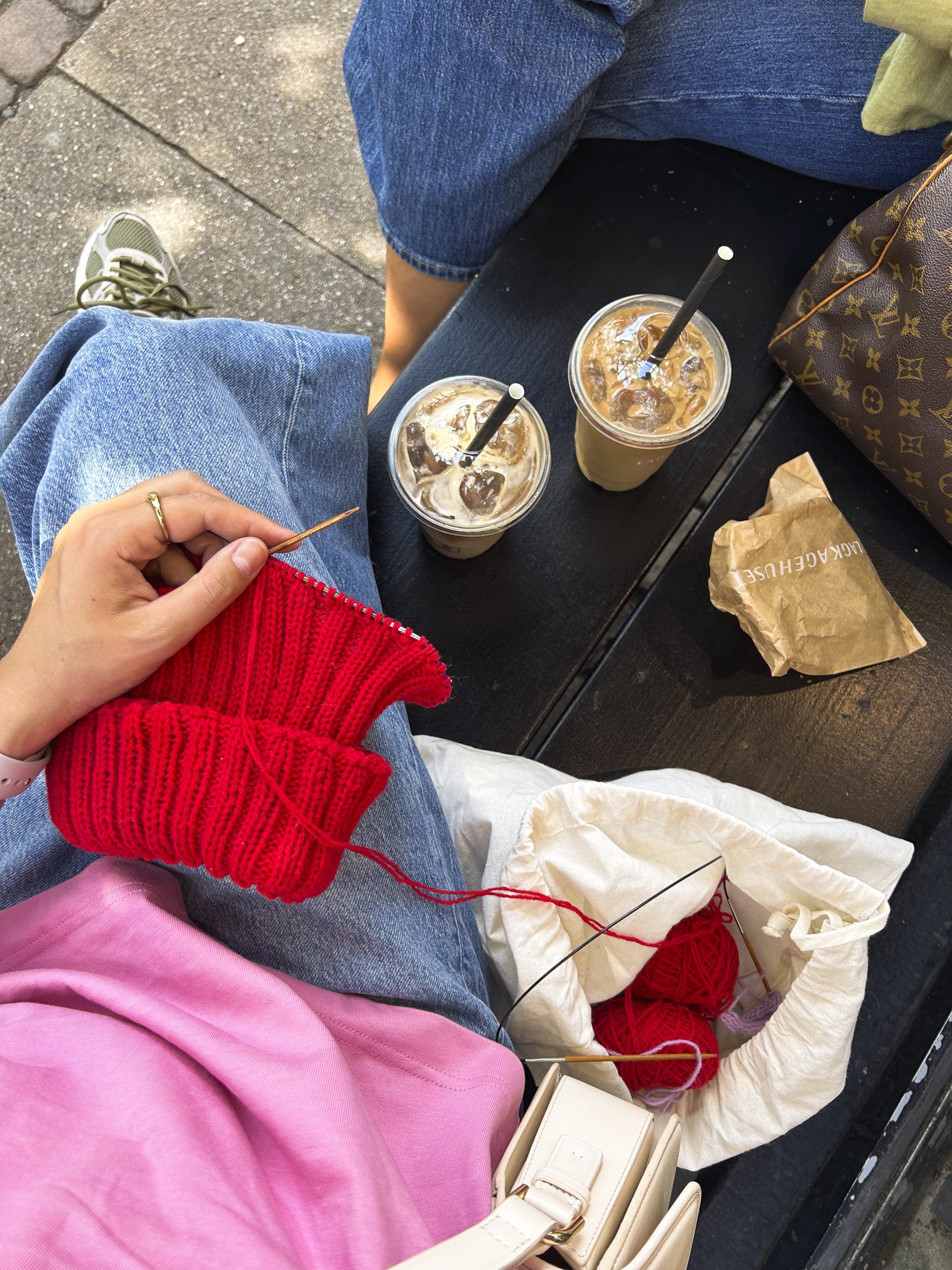
COMMON ABBREVIATIONS
-
M or m= indicates a marker, which is placed on your needle to track sections of your knitting. Learn how to use markers in this video.
SM = slip marker, this means to pass the marker from your left needle to your right without knitting it.RM= remove marker means to take it off your needle entirely. Watch how it’s done in this video.
-
St(s) =stitch(es) refers to the individual loops on your needle. Whether knit or purl, each loop counts as one stitch. See more about stitches in this video.
-
RS = right side refers to the ‘right side’ of your work, or the side meant to face outward when finished. Learn how to identify and work with the RS in this video.
-
WS = wrong side, which is the back or inside of your work. It’s just as important as the right side! Learn to work with the WS in this video.
-
Rnds = rounds are used in circular knitting, where you knit continuously in a spiral or circle. See how to knit in rounds here.
-
BOR = this marks the starting point of a round in circular knitting. Use a marker to keep track of the BOR easily. Watch this video to learn how.
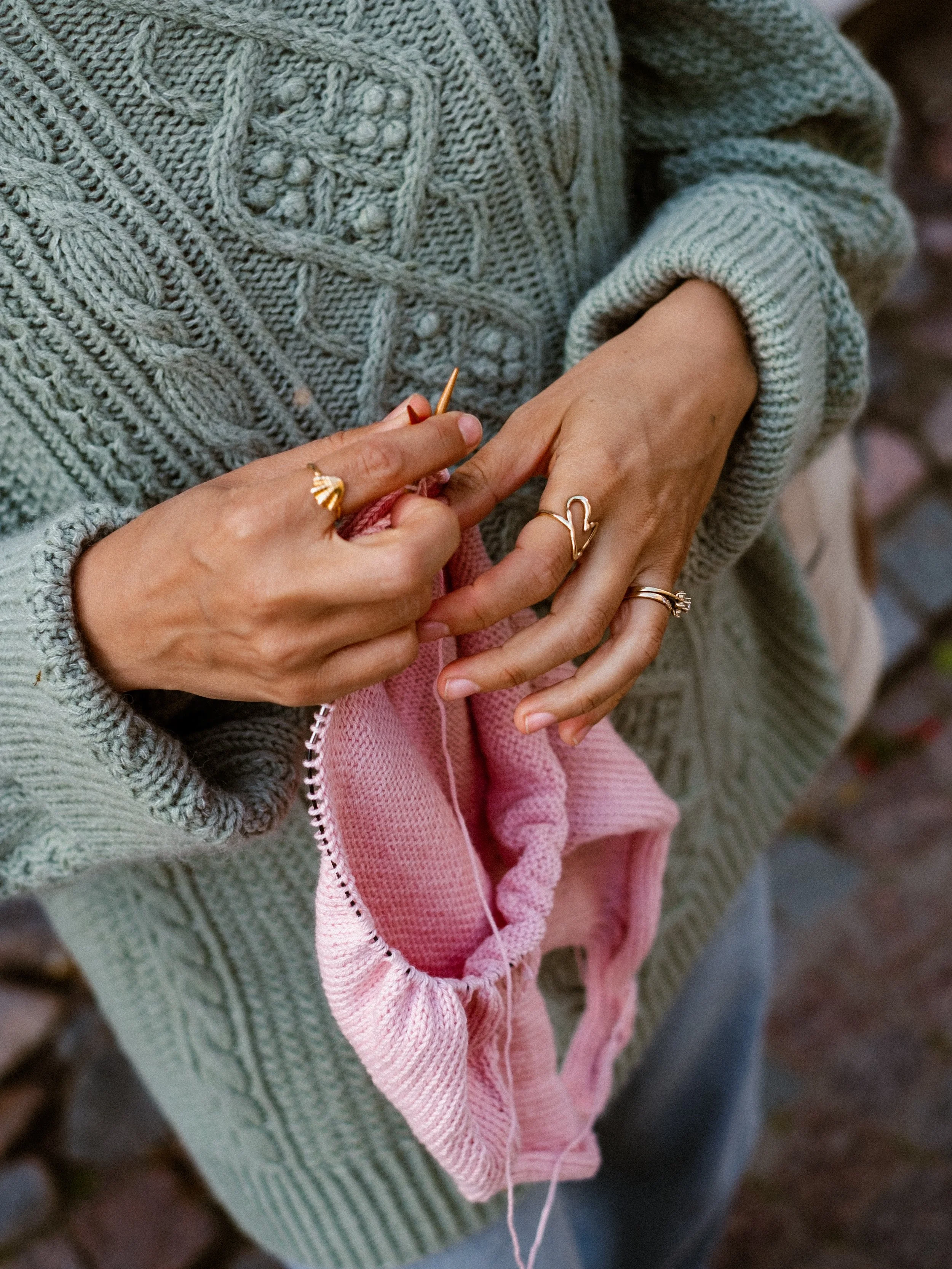
INCREASES
-
M1R is an increase stitch that leans to the right, adding a stitch while keeping your fabric looking neat. Learn how to do it here.
-
M1L is an increase stitch that leans to the left, helping you shape your knitting beautifully. Learn how to do it here.
-
YO, or Yarn Over, is a simple increase that creates a decorative hole in your fabric, perfect for lace patterns. Learn how to do it here.
-
Kfb, or Knit Front and Back, is an easy way to increase a stitch while keeping your project smooth and even.
Knit the stitch through the front and back. First, insert the right needle in the stitch on the left needle and knit as you would normally but don’t drop the stitch from your left needle.
Next, bring your right needle to the back of the left needle and knit into the same stitch through the back. Slip the stitch from the left needle to the right. 1 stitch increased.
DECREASES
-
SSK is a left-leaning decrease that creates a smooth and tidy edge in your knitting. Learn how to work this decrease step by step in this video.
-
SSSK is a triple left-leaning decrease that reduces three stitches into one. To work it, slip three stitches one at a time knitwise, then insert your left needle into the front of these slipped stitches and knit them together.
-
K2tog is a right-leaning decrease that’s simple and quick to work, perfect for shaping and reducing stitches. Learn how to do it in this video.
-
K3tog is a right-leaning decrease that combines three stitches into one. To work it, insert your right needle into three stitches at once as if to knit, then knit them together as a single stitch.
-
P2tog is a basic purl decrease that reduces two stitches into one while maintaining a neat look on the reverse side. Learn how to do it in this video.
-
SSP is a left-leaning purl decrease that’s perfect for shaping on the wrong side of your fabric. Watch this video to learn how to do it.
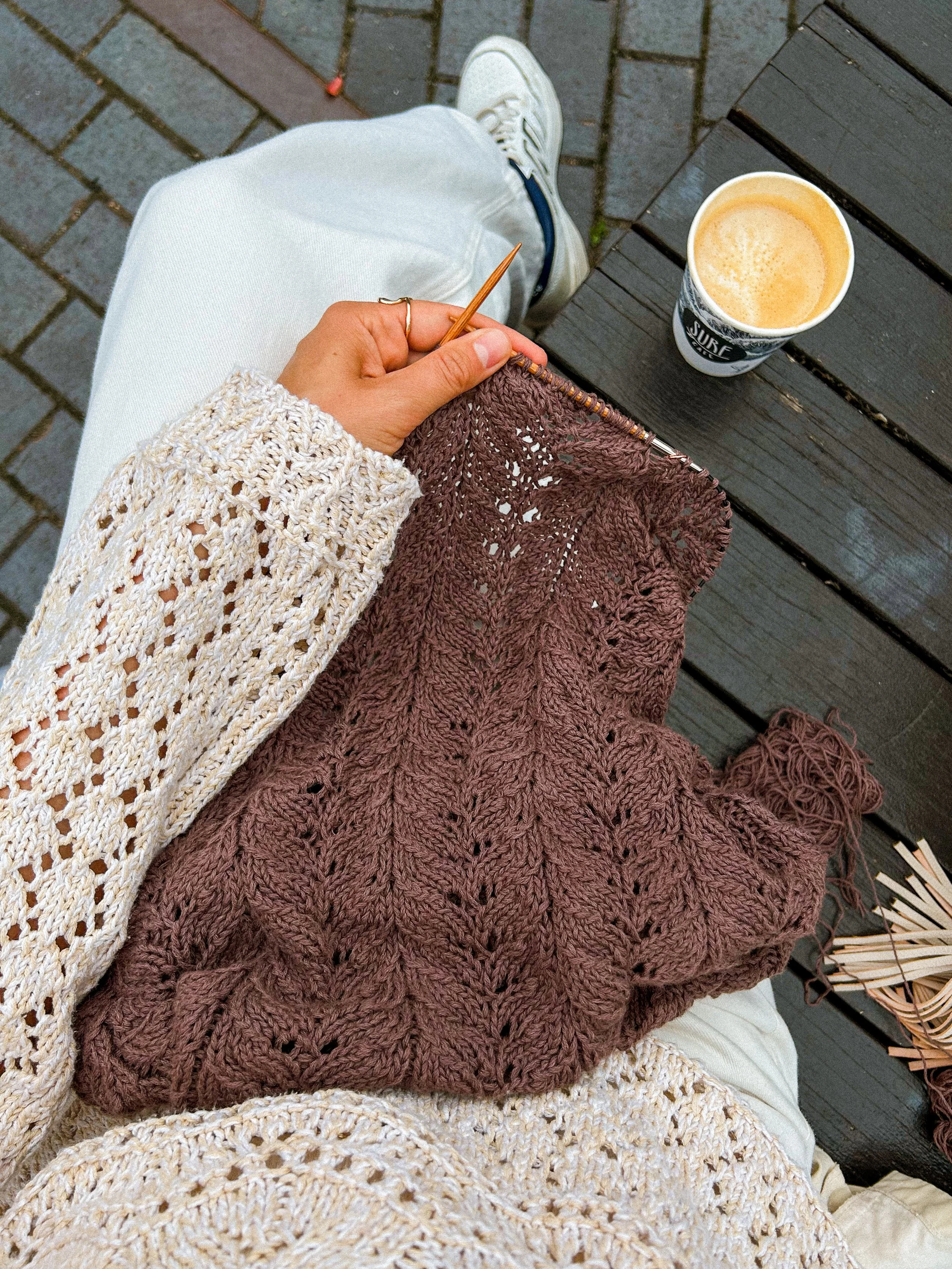
SPECIAL TECHNIQUES
-
The Italian Bind-Off creates a stretchy, seamless edge that’s perfect for ribbing. It mimics the look of a tubular cast-on, making it ideal for any project requiring elasticity and a polished finish. Watch how it’s done in this video.
-
German Short Rows are a popular method for creating smooth and invisible shaping in your knitting. This technique uses a ‘double stitch’ to eliminate gaps when turning your work. Learn how to master it in this video.
-
DS, or Double Stitch, is a key part of German Short Rows. It involves pulling the working yarn tightly over the needle to create a doubled stitch, which is later worked as one to close the gap seamlessly. See how it works in this video.
-
A Double Knitted Button Band creates a sturdy, reversible edge with clean lines on both sides. Watch how to make it here.
-
Adding a buttonhole in a Double Knitted Button Band involves carefully working openings into the fabric without disrupting the double-knit structure, ensuring both sides remain neat and functional. Learn how in this video.
-
An I-Cord Edge adds a smooth, rounded finish to your knitting. Watch the tutorial here.
-
A Bobble is a decorative stitch that adds texture and dimension to your knitting. It’s created by working multiple stitches into one and then decreasing them back down to a single stitch, forming a small, raised bump. See how to create bobbles in this video.
